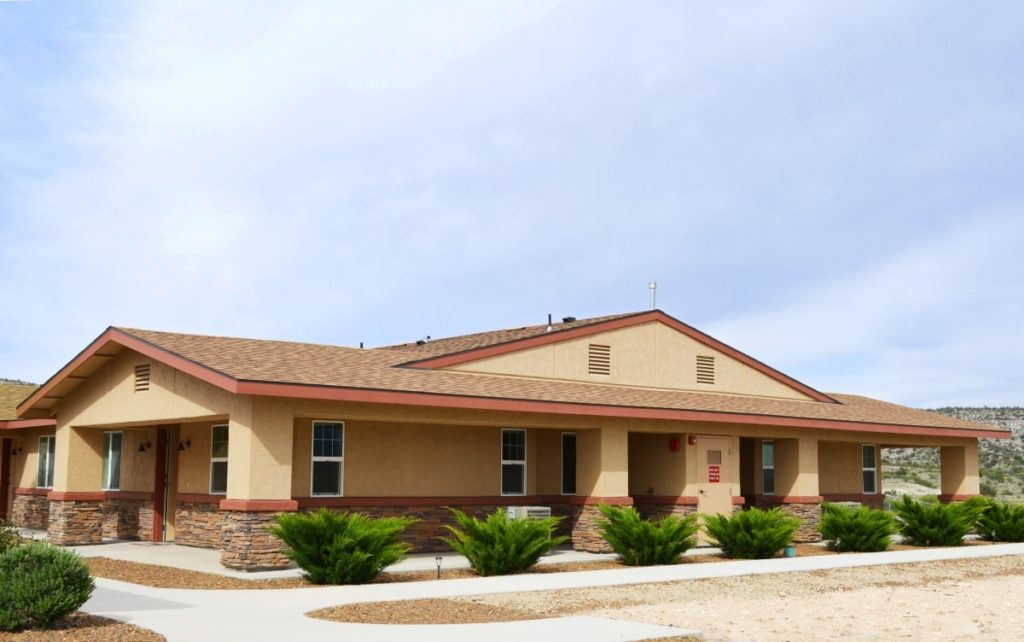
Families looking for housing options for their loved one with developmental disabilities have access to options that have changed markedly over the past several decades. Gone are the days of the sole option of institutional settings, and risen are the more individualized and integrated housing situations that offer choice, fellowship and a true sense of community. The types of living arrangements for people with developmental disabilities, and the differing names and categories of those housing types can seem a little confusing, especially if you are researching the housing options for the first time.
We hope that your consideration of this quick list of the most housing options for people with developmental disabilities will be helpful in your decision making.
The old approach: Institutions
Institutional housing options for people who are differently-abled are still an available option, but they are being phased out of the market in favor of a newer, community-based housing approach. For much of the 20th century, people with developmental disabilities were often segregated from society in institutionalized settings, regardless of their level of support needs. It was a cookie-cutter, one-size-fits-all approach that did not enter the individual’s own desires into the equation. Housing that failed to take into account the preferences (choice) and varying levels of support needed, have faded away in favor of new innovative approaches to housing.
Today, the institutional model is largely an antiquated practice and has been replaced by a healthier model where people with developmental disabilities live together in small groups in their own homes; the group home model. While the group home model has been a celebrated replacement for institutions, still more forward-thinking solutions to families who are looking for housing for their loved one have emerged. They offer a greater level of choice and independence for people with intellectual and developmental disabilities (IDD).
Approach #1: Shared Living Arrangements
As a relatively new concept when it comes to housing for people with IDD, shared living arrangements provide a housing option where the person with IDD actually lives with another family in that family’s home. This makes shared living one of the top integrated and community-based housing options available. The arrangement provides needed support for the individual’s daily living and it often integrates a person into a family where they can experience the feeling of belonging. In shared living, the host family receives extensive training by an accredited local or state agency so they can meet the specific needs of the person they bring into their home. The shared living approach provides much more than a place to live for people with IDD – it provides them the opportunity to bond with, and be a true part of, a family.
Approach #2: Integrated Community Living
Communities where people with or without disabilities live together in a truly integrated environment is one of the newer concepts in the housing market. Addressing misconceptions about people with developmental disabilities, breaking barriers, and working towards open-mindedness about people with IDD and the rest of the community is the goal of this type of approach.
Approach #3: Supportive Housing
The supportive housing approach allows people with IDD to live as independently as possible by subsidizing rentals or being tuition-based, and providing access to intermittent support services. Independently-minded adults with disabilities live on their own while also receiving the support they need for every day tasks – a combination well-suited for personal growth, skills development and happiness. In this scenario, it is up to the person to determine the level and types of ongoing support they need. This makes the supportive housing option a solid person-centered approach.
Rainbow Acres has been a leader in the area of supportive housing for people with disabilities for decades. With its ranch-style campus in Camp Verde, Arizona, Rainbow Acres provides an energetic, inclusive environment for independent adults with disabilities.
As the exploration and research into which living arrangement may be best for you or your loved one begins, consider some of these forward-thinking approaches to housing. We think you will agree: A family or a person should not simply settle for a place to live—rather they should choose a place to call home.

